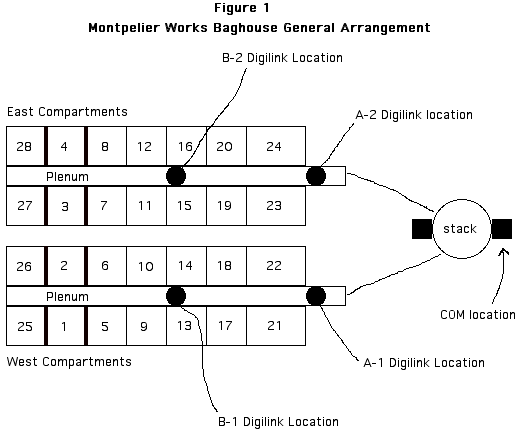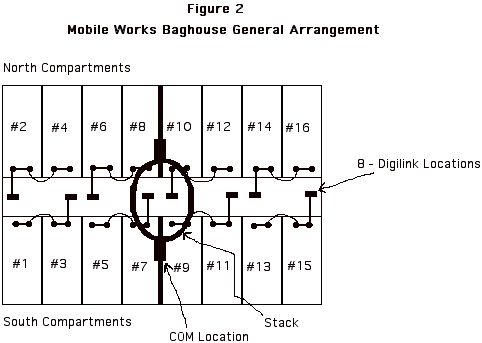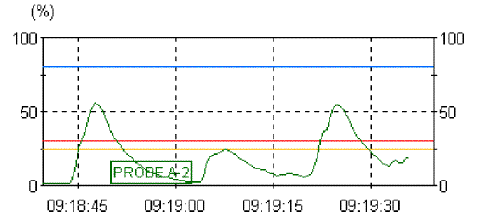

| Parameter | Montpelier | Mobile |
| EAF Type | Twin Shell DC Electrode | Twin Shell AC Electrodes |
| EAF Size | 165 ton | 175 ton |
| Baghouse Type | Negative Pressure | Positive Pressure |
| Air Volume (acfm) | 980,000 | 1,600,000 |
| Compartment No. | 28 | 16 |
| Cleaning Mechanism | Pulse Jet | Reverse Air |


| Parameters | Montpelier | Mobile |
| Manufacturer: | Auburn Systems, LLC | Auburn Systems, LLC |
| Model: | TribolinkTM | Tribolink TM |
| Number of Detector Locations: | 4 | 8 |
| Number of Probe Rods/Location: | 2 | 4 |
| Detector Material of Construction: | 316 Stainless Steel | 316 Stainless Steel |
| Probe Temperature Range | -60 °F to 400 °F | -60 °F to 400 °F |
| Input/Output Interface: | PC | PC |
| Operating System Platform: | Windows 98 | Windows 98 |





